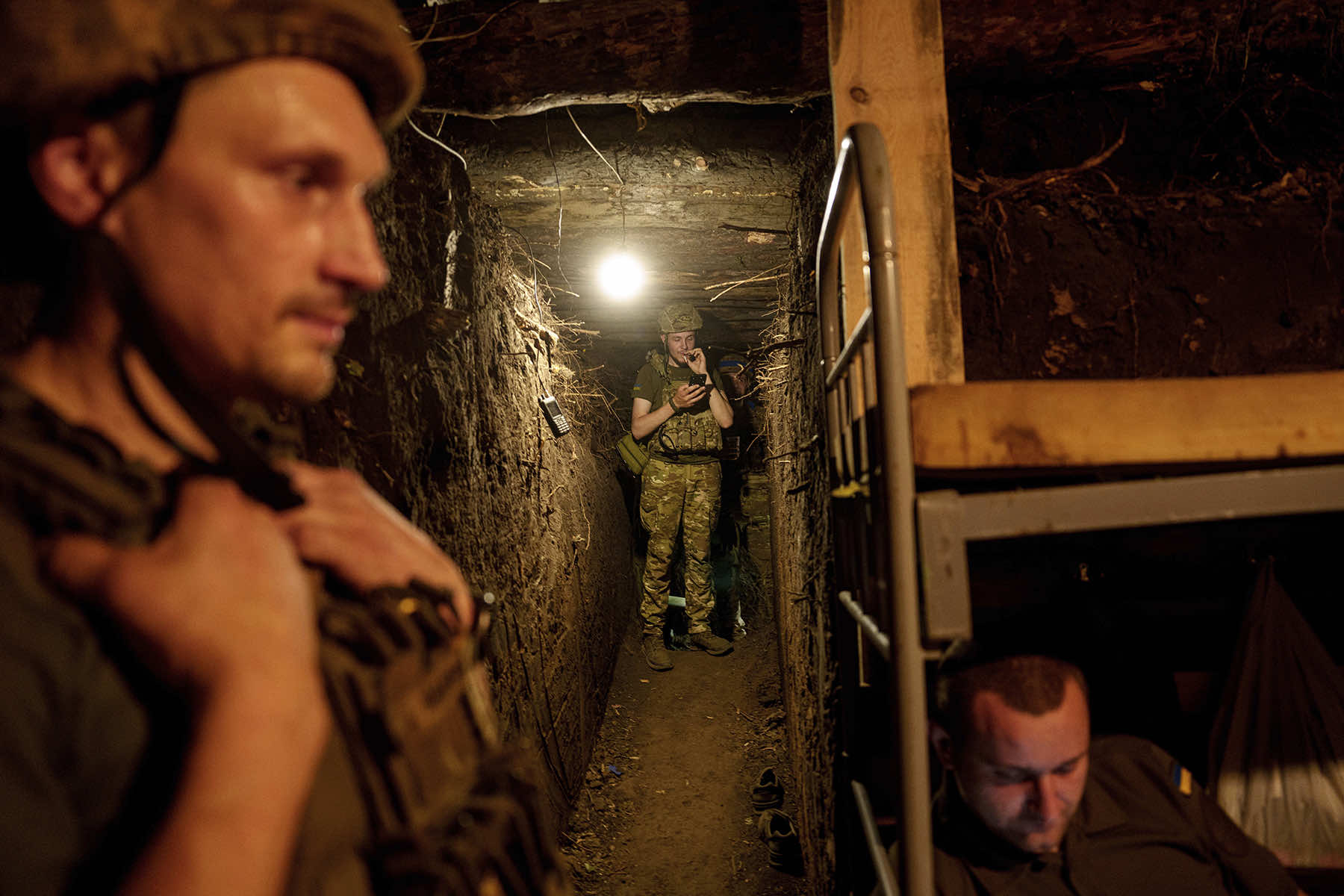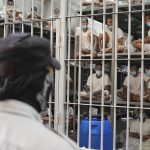
November 20, 2024, marks the tragic milestone of the 1,000th day since Russia launched an unprovoked invasion of Ukraine.
The brutal assault, intended to topple Ukraine’s government within days, instead ignited a fierce national resistance and a war that has reverberated across the globe. Ukraine’s resilience, supported by a coalition of allies, has stalled and even reversed Russian advances.
However, as convicted criminal and president-elect Trump prepares to return to the White House, Ukraine’s future appears even more precarious. Trump’s past praise for the dictator Putin and his disdain for NATO alliances raises fears that critical American support could dwindle.
FEBRUARY 24, 2022: RUSSIA’S INITIAL BLITZKRIEG AND MISCALCULATION
On February 24, 2022, Russian forces stormed Ukraine’s borders, targeting cities from Kyiv to Kharkiv and Mariupol. Putin falsely justified the invasion with claims of “denazifying” Ukraine, labeling it a “special military operation” aimed at protecting Russian-speaking areas.
Putin believed that by overwhelming Ukraine’s military quickly, he could install a puppet government loyal to Moscow. However, the world saw through his lies, recognizing it as an attempt to dismantle Ukrainian sovereignty.
President Volodymyr Zelenskyy, once a comedian turned politician, became an international symbol of resilience when he refused offers to evacuate. His response to the American offer to wisk him safely from the grips of Russian capture … “I need ammunition, not a ride,” galvanized the Ukrainian people and inspired millions.
Citizens and soldiers alike resisted, halting Russia’s early advances and defending Kyiv in a tenacious battle that shattered Putin’s hope for a swift victory. The initial resistance also emboldened Ukraine’s allies, who began providing support on an unprecedented scale.
Irpin, a small city on the outskirts of Kyiv and Milwaukee’s sister city, played a crucial and heroic role in the early days of Russia’s invasion, becoming a symbol of Ukrainian resistance. Situated strategically near the capital, Irpin was one of the first cities to experience the brunt of Russia’s initial push toward Kyiv.
Russian forces aimed to seize Irpin as a gateway to the capital, but Ukrainian defenders, including both military and civilian volunteers, mounted a fierce resistance that ultimately halted the Russian advance. The battles in Irpin were intense and brutal, with buildings destroyed, streets turned into battle zones, and thousands of civilians forced to evacuate under heavy shelling.
To slow the Russian onslaught, Ukrainian forces destroyed key bridges in Irpin, which became iconic symbols of sacrifice to protect Kyiv. By successfully stalling the Russian advance, Irpin bought Ukraine’s military critical time to fortify the capital.
The destruction Irpin endured, coupled with the bravery of its defenders, has made it a legendary stronghold in Ukraine’s fight for freedom. Its connection to Milwaukee also serves as a reminder of the city’s resilience and the international solidarity with its people. The Battle for Kyiv became an early symbol of Ukrainian resistance, as Russia’s attempted blitzkrieg fell apart, forcing the Kremlin to reconsider its strategies and objectives.
RUSSIAN TACTICS SHIFT: MARIUPOL AND KHARKIV UNDER SIEGE
When Russia’s initial strategy failed, it resorted to brutal sieges. Mariupol, a strategic port city, became a horrific symbol of Russian tactics. Russian forces leveled entire districts, killing thousands and trapping civilians without food, water, or medicine. The bombing of the Mariupol Drama Theatre, where hundreds had taken refuge, became an indelible image of the atrocities committed against the Russian-speakers Putin had pledged to liberate. Similar fates befell Kharkiv and other cities, where Russian artillery targeted hospitals, residential neighborhoods, and schools.
Despite the devastation, Ukraine’s will remained unbroken. The besieged cities became symbols of Ukrainian courage, rallying further international support and reshaping global perceptions of Russia’s military capabilities. The cost, however, was staggering with thousands of lives lost, countless others displaced, and cities reduced to ruins.
WESTERN SUPPORT: A LIFELINE FOR UKRAINE’S DEFENSE
In the face of Russia’s overwhelming firepower, Ukraine’s military and economic survival depended heavily on Western aid. The U.S., NATO, and European allies provided billions of dollars in weapons, training, and intelligence, supplying everything from anti-tank Javelins to HIMARS rocket systems. These high-tech arms enabled Ukrainian forces to counter Russia’s advances in key battles.
Sanctions imposed by the U.S. and the EU further crippled Russia’s economy, restricting its access to critical technology and financial markets. Even countries with energy ties to Russia joined the effort, reducing or cutting off Russian gas imports despite significant economic costs. For Europe, this represented an unprecedented stand against Russian aggression, one that highlighted the dangers posed by dependence on Russian energy.
2023-2024: A WAR OF ATTRITION AND KEY UKRAINIAN VICTORIES
As 2023 began, the war had transformed into a grueling conflict of attrition. Yet, Ukraine scored several critical victories. In November 2022, Ukrainian forces reclaimed Kherson, a significant morale boost for a nation under siege. The successful counteroffensives in the northeast liberated swathes of territory in the Kharkiv region, further destabilizing Russian positions.
The resilience demonstrated by Ukrainian forces was bolstered by Western-provided weaponry and intelligence, which helped Ukraine resist and push back Russian forces. These victories carried enormous costs, with high casualty rates and infrastructural devastation, but they underscored that Putin’s ambitions were increasingly out of reach. Russia’s reliance on Iranian Shahed drones and missile strikes—used to batter Ukrainian infrastructure and terrorize civilians—demonstrated a shift toward attritional tactics meant to weaken Ukraine’s resolve.
BEFRIENDING PUTIN: CHINA’S ENABLING ROLE
While officially maintaining a stance of neutrality, China has played a pivotal role in sustaining Russia’s war efforts, indirectly enabling Putin’s prolonged assault on Ukraine. China’s continued purchases of Russian oil and gas have provided critical financial support to Russia’s economy, helping Moscow offset the impact of Western sanctions. Beyond economic ties, China’s state media and diplomatic channels have often echoed Russian narratives about the war, shaping global perceptions and subtly undermining international condemnation of Russia’s aggression. That quiet support, while avoiding direct military involvement, has significantly bolstered Russia’s determination, reinforcing the geopolitical fault lines that have deepened since the invasion began.
KIM’S POWER PLAY: NORTH KOREAN TROOPS ON UKRAINIAN SOIL
In a concerning escalation, North Korea has recently entered a formal agreement with Russia to send soldiers to fight on Ukrainian soil. The unprecedented move introduced North Korean troops into active combat zones in Ukraine, adding an unexpected and complex dimension to the conflict. Known for their harsh training and loyalty to Kim Jong-un, North Korean soldiers bring an unfamiliar combat style that could complicate Ukrainian defense efforts. Their presence is a direct result of an expanding authoritarian alliance, as Putin looks to unconventional allies willing to defy international norms to support his brutal campaign.
RUSSIA’S TERROR TACTICS: DRONE WARFARE, POWER OUTAGES, AND TARGETING CIVILIANS
Recent drone attacks exemplify Russia’s adapted strategy to wear down Ukrainian resistance through relentless aerial assaults. On November 7, 2024, Russia launched an eight-hour drone barrage on Kyiv, using Iranian-made Shahed drones to stretch Ukraine’s air defenses and terrorize civilians. Although Ukraine’s air defense systems intercepted numerous drones, the debris caused fires and damaged a hospital, residential buildings, and critical infrastructure, demonstrating the constant danger civilians face.
These drone and missile attacks have exacerbated Ukraine’s energy crisis. Targeted strikes on power grids have left large portions of the population without reliable electricity, heat, or water. With winter approaching, the humanitarian cost of the war is set to escalate further. Ukrainian officials warn that Russia is attempting to again drain Ukraine’s resilience, erode morale, and compel the West to question the ongoing support.
A CRITICAL TURNING POINT: TRUMP’S IMPENDING PRESIDENCY
The invasion’s 1000-day mark is additionally darkened by the political uncertainty surrounding Trump’s imminent return to the U.S. presidency. Trump’s relationship with Putin has long alarmed those wary of authoritarian regimes. During his previous term, Trump expressed admiration for Putin, describing him as “strong” and often undercutting U.S. intelligence warnings about Russia’s intentions. His reluctance to fully support NATO, coupled with his criticism of foreign aid, fuels concerns about the future of American support for Ukraine.
Trump’s racist “America First” approach could severely impact Ukraine’s fight. His vocal skepticism regarding U.S. aid to Ukraine suggests he may reduce or even cut off military and financial support, a move that would drastically affect Ukraine’s defense capabilities. Additionally, Trump has previously hinted at a desire to ease tensions with Russia, sparking worry that he could pressure NATO into a less confrontational stance, effectively granting Putin room to intensify his assault on Ukraine without fear of intervention.
Such a shift would have devastating consequences. If U.S. support diminishes, Ukraine may struggle to maintain its defensive positions and continue its counteroffensives, leaving it vulnerable to Russian advancements. The Ukrainian government and its people face the daunting prospect of fighting on with reduced resources, which would fundamentally alter the balance of the conflict.
A GRIM WINTER AHEAD: THE HUMANITARIAN AND PSYCHOLOGICAL TOLL
As winter approaches, Ukraine faces compounded hardships. The war has devastated Ukraine’s energy infrastructure, with power outages leaving millions at risk as temperatures plunge. Russian drone and missile strikes on power grids exacerbate the strain, creating a bleak environment where even survival basics — heat, light, and water — are in short supply.
The psychological toll is profound. Civilians in Kyiv and other targeted cities endure sleepless nights as explosions become routine. The sound of drones buzzing overhead has come to symbolize dread, a constant reminder of the risks civilians face as they attempt to maintain some semblance of normal life. For Ukraine, this winter will be a severe test of resilience amid the relentless reality of daily bombings and the uncertain support of Western allies.
UKRAINE’S PATH FORWARD: DETERMINATION AMID UNCERTAINTY
The 1000-day of war mark serves as a dark commemoration of resilience and a reminder of the precarious future that Ukraine faces. The next months will likely test the strength of global alliances as Trump’s presidency shifts American foreign policy. For Ukraine, Trump’s return signals a potential recalibration in the war, presenting the harsh reality that the country could be left to fend for itself against a larger, better-equipped Russian force.
Despite the challenges, Ukrainians remain resolute. The country’s leadership, military, and civilian defenders have repeatedly shown that they will not yield. But sustaining the resistance for another year may soon depend on whether allies reaffirm their commitments, even as political shifts in the U.S. cast a shadow on Ukraine’s path forward.
© Photo
Kateryna Klochko (AP), Evgeniy Maloletka (AP), Mykola Tys (AP), Efrem Lukatsky (AP), Alex Babenko (AP), Jens Buettner (AP), Oleg Petrasiuk (AP), Kateryna Klochko (AP), Ukrainian Presidential Press Office (via AP)































